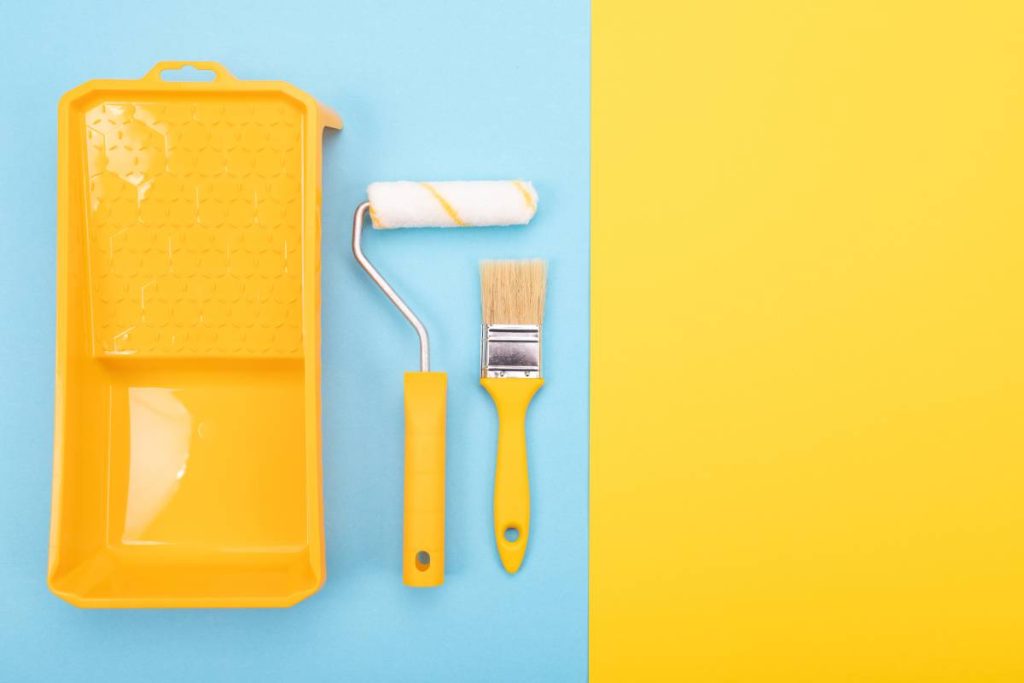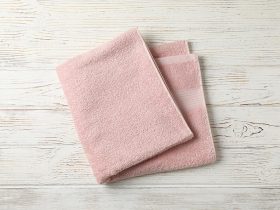Planning to paint a room is like getting ready to create your own work of art. But here’s the catch: the kind of paint you choose matters a lot!
There are so many options out there, from the good quality ones to the more affordable ones. Let’s dive into what makes good paint different from the cheaper stuff. Understanding these differences is like having a secret recipe for a paint job that not only looks amazing but also lasts a really long time.
The standard for quality painting in Australia
When you’re looking to hire a professional painter, whether it’s for your home or a commercial space, it’s essential to confirm that they adhere to the Australian Standard of Painting and follow the manufacturer’s guidelines. This step is crucial for guaranteeing that your paint job not only looks great but also stands the test of time.
The Australian Standard for Painting, known as AS/NZS 2311, outlines the minimum requirements for applying paint systems to different surfaces. By following this standard, painters ensure that their work meets high-quality standards, leading to a paint job that is both long-lasting and durable.
This standard provides guidelines on surface preparation, the types of coatings suitable for various surfaces, and the recommended number of coats. It also considers different environmental factors, such as coastal areas or places with high humidity, to ensure the painting process is appropriate for specific conditions.
Making sure that the painter complies with the Australian Standard and follows the manufacturer’s instructions is crucial to prevent defects in your paint job. If you notice any issues with your painted surfaces, it could be an indication that the correct procedures or suitable products were not used during the painting process. Taking these steps will help you achieve a painting job that not only looks great initially but continues to impress for years to come.

Painting is a transformative art that enhances the beauty of our surroundings, be it the walls of our homes or the exterior of a building. However, even the most skilled painters can encounter challenges that result in painting defects. Understanding these common issues can help both DIY enthusiasts and professionals achieve a flawless finish.
Let’s delve into the top 4 painting defects and how to prevent or fix them.
- Brush Marks: Cause: Brush marks are uneven patterns left by the paintbrush during application. They often occur when using low-quality brushes or applying too much pressure. Prevention and Solution: To prevent brush marks, invest in high-quality brushes and use proper painting techniques. Apply the paint in the direction of the wood grain or the longest dimension of the surface. If brush marks appear, lightly sand the affected area and apply a second coat using long, smooth strokes.
- Blisters: Cause: Blisters are bubbles that form under the paint film, typically caused by moisture, oil, or an incompatible surface underneath the paint. Prevention and Solution: Ensure the surface is clean and dry before painting. Repair any water leaks or moisture issues. If blisters have already formed, scrape away the affected paint, sand the area, and apply a primer before repainting.
- Cracking: Cause: Cracks in paint often result from the application of a thick layer of paint, using an inflexible primer, or painting over a surface with underlying structural issues. Prevention and Solution: Use a high-quality, flexible primer suitable for the surface. Avoid applying thick layers of paint; instead, opt for multiple thin coats. If cracks have appeared, sand the area, fill in the cracks with putty, and repaint with a flexible, high-quality paint.
- Peeling: Cause: Peeling occurs when paint loses adhesion to the surface, often due to poor surface preparation, moisture, or using incompatible paint products. Prevention and Solution: Properly prepare the surface by cleaning and sanding it before painting. Address any moisture issues and use compatible primer and paint products. If peeling has occurred, scrape away the loose paint, sand the surface, prime, and repaint.
How can you tell if the paint is high quality?
Choosing high-quality paint is crucial for achieving a durable and attractive finish on your walls. With numerous paint options available, it’s essential to know how to distinguish between good and not-so-good quality paint.

Let’s explore some simple yet effective indicators that can help you determine if paint is of high quality.
- Check the Label: High-quality paints typically display detailed information on their labels. Look for terms like “100% acrylic” or “100% latex” as these indicate a paint’s primary binder. Acrylic or latex binders are known for their durability, flexibility, and resistance to cracking or peeling. Additionally, a higher percentage of solids in the paint content often signifies better quality.
- Colour Consistency: A good quality paint will have consistent colour throughout the can. Before purchasing, stir the paint thoroughly and check for uniformity. If the colour appears uneven or there are noticeable variations, it may indicate a lower-quality paint with inadequate pigment dispersion.
- Coverage and Hiding Power: High-quality paints typically have excellent coverage and hiding power. Coverage refers to the amount of surface a gallon of paint can cover while hiding power measures its ability to conceal the underlying surface or color. Look for paint that boasts good coverage and hiding power, reducing the need for multiple coats and saving you time and money.
- Sheen and Texture: The sheen level of paint affects its appearance and durability. High-quality paints often offer a range of sheen options, from flat to high gloss. A good paint will have a smooth, consistent texture, free of lumps, clots, or grit. If the paint appears uneven or gritty, it may not provide a smooth finish on your walls.
- Drying Time: Quality paints tend to have a reasonable drying time. While quick-drying paints may seem convenient, extremely rapid drying may compromise the smoothness of the finish. On the other hand, excessively slow-drying paint can be inconvenient for DIY projects. Look for a paint that strikes a balance, allowing you enough time to work with it while ensuring efficient drying.
- Resistance to Stains and Scratches: High-quality paint is more likely to resist stains, scuffs, and scratches. Look for paints labelled as washable or scrubbable, indicating their ability to withstand cleaning without compromising the finish. This is particularly important in areas prone to high traffic or potential staining.
- Smell and VOC Content: Low-quality paints may emit strong and unpleasant odours, often associated with higher levels of Volatile Organic Compounds (VOCs). High-quality paints, especially those labelled as low-VOC or zero-VOC, are formulated to have minimal odours and lower environmental impact, making them a healthier choice for indoor spaces.
In summary, when choosing paint, take a closer look at the label, consider factors like colour consistency, coverage, and sheen, and pay attention to drying time and resistance to stains.
What is the difference between good paint and cheap paint?
Selecting the right paint for your project is like choosing the perfect colour palette for a masterpiece. The difference between good paint and cheap paint goes beyond the price tag; it involves various factors that impact the overall quality and longevity of your paint job. Let’s explore these differences simply and understandably.

- Binder Quality: Good Paint: High-quality paints often use premium binders like 100% acrylic or 100% latex. These binders contribute to the paint’s durability, flexibility, and resistance to cracking or peeling. Cheap Paint: Inexpensive paints may use lower-quality binders, like vinyl acetate or vinyl acrylic. These binders can be less durable and may not provide the same level of performance as their higher-quality counterparts.
- Pigment Concentration: Good Paint: Quality paints have a higher concentration of pigments, which are the colour particles in the paint. This results in richer, more vibrant colours and better coverage. Cheap Paint: Lower-quality paints may contain fewer pigments, leading to duller colours and requiring additional coats to achieve the desired coverage. This can result in a less visually appealing and uneven finish.
- Filler Content: Good Paint: High-quality paints have minimal filler content. Fillers are additives that can dilute the paint and reduce its overall quality. Quality paints prioritize the use of pigments and binders over fillers. Cheap Paint: Inexpensive paints often contain higher levels of fillers, which can affect the paint’s durability and coverage. The presence of excessive fillers may result in a chalky appearance and a less resilient finish.
- Coverage and Hiding Power: Good Paint: Quality paints typically offer excellent coverage and hiding power. This means you need fewer coats to achieve a consistent and opaque finish, saving both time and money. Cheap Paint: Lower-quality paints may have inferior coverage and hiding power, requiring more coats to achieve the desired result. This can result in a longer and more labour-intensive painting process.
- Sheen Options: Good Paint: High-quality paints often provide a range of sheen options, from flat to high gloss. This versatility allows you to choose the finish that best suits your preferences and the specific requirements of the painted surface. Cheap Paint: Inexpensive paints may offer limited sheen options, restricting your ability to achieve the desired aesthetic. This can be particularly limiting when trying to match existing finishes in a space.
- Durability and Resistance: Good Paint: Quality paints are formulated to be more durable and resistant to wear, stains, and fading. They are better equipped to withstand the rigours of daily life, making them suitable for high-traffic areas. Cheap Paint: Lower-quality paints may lack the durability and resistance of their higher-quality counterparts. They may be more prone to chipping, cracking, and showing signs of wear over time.
- Environmental Impact: Good Paint: Many high-quality paints are formulated with lower levels of Volatile Organic Compounds (VOCs), contributing to better indoor air quality and reduced environmental impact. Cheap Paint: Inexpensive paints may contain higher levels of VOCs, leading to stronger odours and potential health concerns. Opting for low-VOC or zero-VOC paints is a healthier choice for both your living space and the environment.
Conclusion
So, wrapping up our paint adventure, we’ve learned that picking between good paint and cheap paint is about more than just the price tag. It’s like choosing between a masterpiece and something that might not quite hit the mark. From fancy ingredients like top-notch binders and strong pigments to things like better coverage and long-lasting power, good paint is the VIP of the painting world.
Sure, the budget-friendly paints might call your name, but investing in good paint is like giving your walls a VIP treatment. Next time you’re at the store, armed with your new paint wisdom, remember: your choice isn’t just about colour; it’s about creating a lasting masterpiece that tells a story of quality and timeless beauty.
So, go ahead, choose wisely, paint confidently, and let your walls shine with a touch of lasting elegance.



























